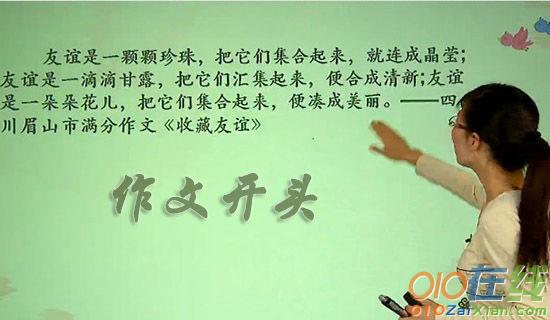1.观点法:开门见山,直接了当地提出自己对要讨论的问题的看法。

(1)Now people in growing/significant numbers are beginning/coming to realize/accept/(be aware) that...
现在越来越多的人已经开始意识到...
(2)Now there is a(n) growing awareness/recognition of the necessity to....
越来越多人已经意识到....的必要性
(3)Now people become increasingly aware/conscious of the importance of ....
现在人们已经不断地密切关注......的重要性
(4)Perhaps it is time to have a fresh look at the attitude/idea that....
是时候应该对用一种新的观点(态度)来看待...了
2.对立法:先引出其他人的不同看法,然后提出自己的看法或者偏向于某一看法,适用于有争议性的主题。
(1)When asked about..., the vast/overwhelming majority of people say that …. But I think/view a bit differently.
当被问及道......的话题,大多数人认为,但是我却持有一点反对意见。
(2)When it comes to ...., some people believe that…. Others argue/claim that the opposite/reverse is true. There is probably some truth in both arguments/statements, but I tend to the former/latter.
一提到....一些人相信....然后另一部分人却不这么认为。这两种观点都有相对正确的地方,但我更倾向于前者(后者)
(3)Now, it is commonly/generally/widely believed/held/acknowledged that..... They claim/ believe/argue that ... But I wonder/doubt whether.....
现在,普遍的观点认为...他们坚信....但我对此却表示怀疑...
3.现象法:引出要剖析的现象或者问题,然后评论。
(1)Recently the rise in the problem/phenomenon of ... has cause/aroused public/popular/wide/ worldwide concern.
近来有个现象(问题)不断发生...并且已经受到公众广泛关注。
(2)Recently the issue of the problem/phenomenon of ...has been brought into focus/into public attention.
最近关于....的现象(问题)已经进入了公众的视线。
(3)Inflation/Corruption/Social inequality ... is yet another of the new and bitter truth we have to learn to face now/constantly.
通货膨胀(腐败、社会不平等社会问题)已经成为了新的可怕的真相,使我们不得不持续地面对。
4.引用法:先引出名人名言或者有代表性的看法,来引出文章要展开论述的观点!
(1)"Knowledge is power." This is the remark made by Bacon. This remark has been shared by more and more people.
“知识就是力量”这是培根的名言,正被越来越多的人分享。
(2)"Education is not complete with graduation." This is the opinion of a great American philosopher. Now more and more people share his opinion.
“教育不应该随着毕业而结束。”这是一个著名的美国哲学家的观点,现在越来越多人分享着他的名言。
(3)"...." We often hear statements/words like those/this.
我们经常听到这句名言...
(4)We often hear such traditional complains as this "....".
我们经常听到这句古训...
5.比较法:通过对过去、现在两种不同的倾向、观点的比较,引出文章要讨论的观点。
(1)For years, ...had been viewed as .... But people are taking a fresh look now. With the growing ..., people ....
多年来,普遍认为的观点是...但是现在人们正用一种新的眼光看...随着...的增长,人们还会...
(2)People used to think that ... (In the past, ....) But people now share this new idea.
过去人们认为,但是现在人们有了新的观点。
6.故事法:先讲一个较短的故事来引发读者的兴趣,引出文章的主题。少用!
(1)Once in (a newspaper), I read of/learnt..... The phenomenon of ... has aroused public concern.
曾经在报纸上我读到过这么一段事情...这个现象已经引发了强烈的关注。
(2)I have a friend who ... Should he ....? Such a dilemma we are often confronted with in our daily life.
我有个朋友他....他应该这样吗?此类困难在我们日常生活中一直遇到。
(3]Once upon a time, there lived a man who .... This story may be (unbelievable), but it still has a realistic significance now.
从前有个人...这个故事也许是虚构的,但我认为现在很有现实意义。
本文来源:https://www.010zaixian.com/zuowen/yingyu/1609763.htm